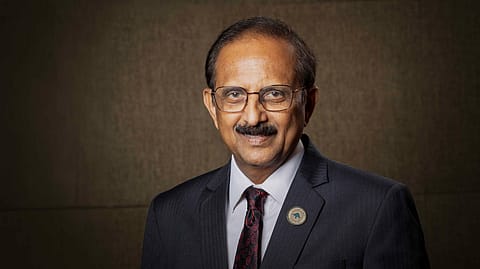Savings deposits still have not lost their relevance: SBI Chairman C.S. Setty
With ₹54 lakh crore, the country’s biggest lender has a market share in deposits at over 22%

As India’s financial landscape undergoes a dramatic transformation with savers increasingly turning into savvy investors, C.S. Setty, Chairman of the State Bank of India (SBI), remains confident in the enduring strength of the nation’s savings culture.
“Savers and investors should not be looked at differently. Primarily they’re savers, right? It’s just that what they were saving has changed. The general narrative is that saving is being converted into investment. But even putting in a bank deposit is an investment. It is a safer investment as people were probably not willing to take a kind of risk or return call earlier,” explains Setty, sitting out of the bank’s head-office in Mumbai.
In an exclusive interview with Fortune India, Setty outlined how SBI is adapting to this shift, ensuring that bank deposits remain relevant while navigating changes in current account and savings account (CASA) dynamics, all driven by heightened financial awareness and a post-Covid market surge.
According to the recent Financial Stability Report by the Reserve Bank of India, banks’ liability profile has been changing, with the share of higher-cost term deposits and certificate of deposits growing compared to low-cost CASA deposits. Scheduled commercial banks’ aggregate deposits have grown at 10.7% (YoY) in FY25, notwithstanding a deceleration in respect of private sector and foreign banks.
He credited the rise in investment activity to accessible, digitally driven platforms such as mutual funds and growing financial literacy. “With the growth of investment markets and mutual funds becoming affordable and digitally driven. And awareness is also one of the important factors which has happened,” explains Setty.
Younger savers, particularly those earning around ₹1 lakh, are at the forefront of this shift. “My observation is that if a new saver is coming, somebody who’s having ₹1 lakh of earnings... their first instinct is to invest,” reveals Setty, referring to their preference for products such as mutual funds.
Yet, he stressed the need for balanced allocation as incomes rise. “As their income levels go up, they will always allocate,” he says, advocating for a disciplined approach to financial planning. “We need to make this a habit among these savers that as much as you are putting all the money in the bank, putting all the money in the investment opportunity also is not a correct option.”
Despite the growing allure of the markets, Setty dismisses concerns that bank deposits are losing ground. “Bank deposits still have not lost their relevance,” he asserts, citing SBI’s opening of 60,000 to 65,000 savings accounts daily, with many transitioning from zero-balance to funded accounts within a month or two. “I believe savings in the form of bank accounts, savings in the form of investments coexist,” he says, framing the trend as a matter of allocation rather than competition between the two.
On the CASA front, Setty addresses challenges posed by a decline in Current Account (CA) balances, particularly from government accounts. “Government has become more efficient in its cash management... which means that the government-related current accounts would be a challenge for the banks,” he acknowledges, noting a significant drop in these balances.
However, business current account balances are proving resilient. “Current accounts are not going down,” Setty clarifies, highlighting SBI’s strategic shift to market current accounts as comprehensive cash management solutions. “We are selling them as a solution... the cash management solution is inbuilt into our current account today,” he says, explaining that surplus liquidity is seamlessly directed to investment options such as liquid funds. This approach is paying off, with Setty mentioning: “None of our current account variants are sold as something which is meant for maintaining the balance. It is maintaining that liquidity, liquidity surplus, which means that primarily it'll hit the current account and then we'll move into various forms of investment. In fact, we are witnessing that business current account balances are going up.”
SBI has thus far sustained its domestic market share in deposits at over 22%, with deposits crossing ₹54 lakh crore and current account balances up 30.69% YoY, as of June 2025.
(INR CR)
